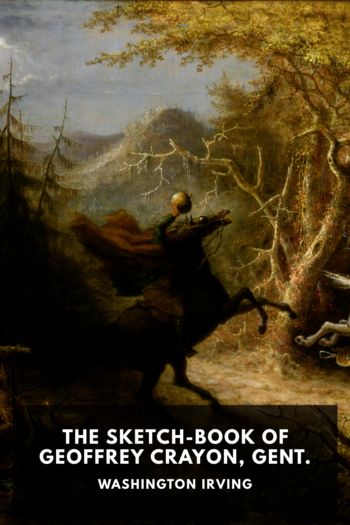Loverly:The Life and Times of My Fair Lady (Broadway Legacies) by McHugh, Dominic (e reader comics TXT) 📕

Read free book «Loverly:The Life and Times of My Fair Lady (Broadway Legacies) by McHugh, Dominic (e reader comics TXT) 📕» - read online or download for free at americanlibrarybooks.com
Read book online «Loverly:The Life and Times of My Fair Lady (Broadway Legacies) by McHugh, Dominic (e reader comics TXT) 📕». Author - McHugh, Dominic
No leading man for the show, then, but preparations were underway. Levin’s next move was to contact the designer Oliver Smith, his old friend and colleague from musicals such as Jule Styne’s Gentlemen Prefer Blondes (1949) and Harold Rome’s Bless You All (1950), both of which Levin co-produced with Smith (who also designed them). On October 17, 1954, Smith wrote to Levin from Hollywood (where he was designing the film version of Rodgers and Hammerstein’s Oklahoma!) in the wake of a brief visit to New York, giving some tantalizing details about the Pygmalion musical: “Please write me about Pygmalion. Are the rights cleared? I want to start soon working on ideas. I have some wonderful research here which will be absolutely terrific. … Send me a scenic outline so I can begin to think about Pygmalion soon.”5
Smith’s eagerness to start work on what would become My Fair Lady is palpable. It is also interesting that he was the first member of the production team to be hired; indeed there appears to have been no debate as to which designer to use for the show. Levin replied to Smith on November 1 with a surprisingly early production date: “From what Alan and Fritzie tell me, Pygmalion is coming along beautifully, and if it continues that way and we can get our casting done in time, we should be in rehearsal by February 15th.”6 So although very few letters from this period survive, Levin was evidently intent on getting the show on the stage within a few months: although he concedes that “I can’t promise the February 15th date, and we all know that February 15th could become September 15th”; he also asks, “If we do go in February … will you still be able to do it?”
The producer continues with a further important piece of information: “I’m having lunch with Cecil Beaton today, because I feel very strongly that he is the best one to do the costumes.” From this, one might infer that Levin was responsible for choosing Beaton for the show, though of course he had been in the running with the Theatre Guild’s potential version in 1952; however, Lerner claims that the choice was “unanimously agreed” upon and that the conversation with Beaton took place during Lerner, Loewe, and Levin’s trip to London in early 1955.7 Also crucial to the genesis of the show is a final reference in the letter from Levin to Smith: “It’s much too early to send you a scenic plot,” he says, “because, though they’ve got the book outlined, they have been working mostly on songs.” Although Lerner never claimed to have written the script by this point, it seems surprising that so little had been prepared by way of a scenic outline: How were the songs motivated, if not by the plot? We know at the very least that a detailed synopsis had been produced for Mary Martin in 1952. Of course, Levin may have deliberately wished to resist unveiling specific information about the show while so much had yet to be decided, but it does indicate, if nothing else, that his February 1955 rehearsal date was rather optimistic.
The next we hear of the show is a telegram of November 19, 1954, in which Barron Polan (an artists’ agent) wrote to the actor Michael Redgrave, supposedly at the suggestion of the conductor Lehman Engel, to ask whether he was interested in playing Henry Higgins.8 Redgrave responded on November 25 to confirm that he was indeed intrigued by the proposal: “I hope that Mr. Levin will send me the script and, of course, the score.” Allusion is made to Lerner and Loewe’s initial attempt at turning Pygmalion into a musical two years earlier, when he had been approached by the Theatre Guild. “I have never heard any more about it,” he said, adding that he was still “very much” interested.
This letter made its way to Levin, who replied to Redgrave on December 1. By this time, the rehearsal start-date was put back to August 15, 1955, and he announced to Redgrave: “We are talking to Cyril Ritchard about directing the book, to Michael Kidd about doing the choreography and to Cecil Beaton about doing costumes.”9 Levin also told the actor that he would be visiting London in two months’ time, and asked him whether he would be available to begin the show in August. No further documentation is forthcoming about later stages of the Levin-Redgrave negotiations, but Redgrave evidently decided to commit to another project. An extract from his diary (held in the Victoria and Albert Museum’s collections) of January 16, 1955, shows that Levin called him even after he had turned down the role, in an attempt to persuade him to do it: “Sleeping when Corin [Redgrave’s son] tells me a call from NY is thro’ … It is Levin from NY about Pygmalion. He … suggests I could get out of Clurman-Giraudoux commitment.10 But in spite of Levin’s persistence, Redgrave apparently still refused, and the producer turned to Rex Harrison.
THE THEATRE GUILD RETALIATES
December 1954–June 1955
In the meantime, the Theatre Guild was determined not be excluded by Lerner and Loewe. They gained the support of Richard Halliday, Mary Martin’s husband, who felt that “the Guild had a moral claim to





Comments (0)